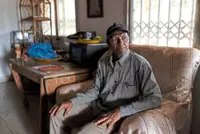A police officer patrols the main square in Rinkeby, Sweden last year. Sweden’s escalating gang war involves more and more younger children. — AFP
ONE night in September, teacher Thomas Cervin was woken by gunshots in his apartment building in Uppsala. His neighbour had just become the latest target in Sweden’s terrifying gang wars.
Execution-style shootings carried out by “child soldiers”, apartment buildings rocked by bombings, innocent relatives targeted in vendettas, and the morning news summarising the night’s death toll – all have become disturbingly routine in the normally quiet country.
Already a subscriber? Log in
Save 30% OFF The Star Digital Access
Cancel anytime. Ad-free. Unlimited access with perks.





